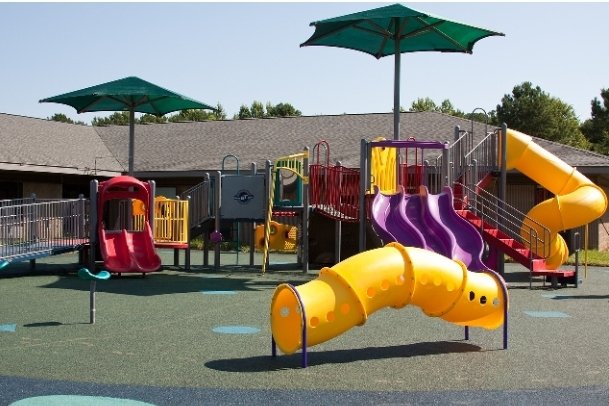When we visualize a playground, we picture a sanctuary where children can frolic and develop, uninhibited by the barriers of indoor confines. Yet, despite the oasis of fun that they offer, playgrounds aren’t without their hazards. Unsuspected threats like the unforgiving UV rays from sunlight can pose risks. It’s therefore paramount to consider including shade structures as integral elements in playground design, not just as aesthetic additions.
The Necessity for Shade Structures
The allure of outdoor play is irresistible for most children. Yet, the sun’s relentless heat can be detrimental. Overexposure to UV rays is linked to potential skin damage and an increased likelihood of skin cancer. Beyond the UV threat, children are also prone to heat-induced illnesses. Protections like retractable shade structures become essential equipment to safeguard our children from these potential dangers.
Shaded play areas come with a myriad of advantages. They help moderate the harshness of the sunshine, thus extending play hours. This not only boosts playtime duration but offers the bonus of maintaining the temperature of playground equipment. Metal slides and plastic swings, notorious for rapid heat absorption, are kept cool, ensuring safe play conditions.
For the adult caretakers, shaded playgrounds mean a more pleasant supervisory experience. The right shade solutions mean more comfort for all, irrespective of the weather.
Shade Structures – An Array of Options
A multitude of options exist for adding shade to a playground. Consider permanent structures like pavilions or pergolas for enduring coverage. They’re perfect for large spaces, and double up as focal points for social gatherings or picnics. With their robustness and resistance to varying weather conditions, they prove to be a sound investment.
If you need flexibility, think portable. Moveable solutions like pop-up canopies and umbrellas can be shifted to different playground locations to adapt to the sun’s changing position. They offer cost-effectiveness and simplicity in installation, making them an excellent choice for small play areas.
Shade sails present another compelling option. Their adaptability allows for a range of shapes and colors, and they can be strategically positioned to cover designated playground zones like sandboxes or climbing frames. Their distinctive design offers an aesthetically pleasing aspect to any playground.
Considerations Prior to Installation
Before delving into installation, contemplate the measurements and layout of your playground. Balance is key as an oversized structure could overwhelm a smaller space. For school playgrounds, focus on the heavily utilized areas that require the most shade. In domestic settings, target areas where children congregate the most.
Geographical location also plays a pivotal role in choosing a shade structure. In regions prone to high winds or substantial snowfall, durable, weather-resistant materials would be best. Lightweight options may be suitable for gentler climates but may not endure more severe weather.
Budget constraints are another significant factor. Prices range widely depending on the structure type. Schools can explore grants or funding options whereas parents could investigate affordable DIY alternatives. The correlation between costs and benefits is crucial, with safety and functionality taking precedence.
Incorporating shade into your playground design is not just a thoughtful gesture, but a crucial safety measure. By acknowledging the importance of shade, exploring the variety of structures available, and considering important factors for installation, you can make informed decisions that benefit all. For anyone keen to further ensure playground safety, expert advice can provide valuable insights and solutions.





